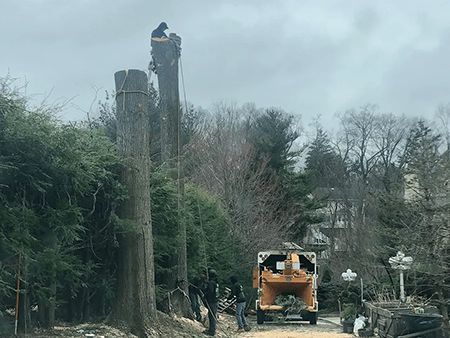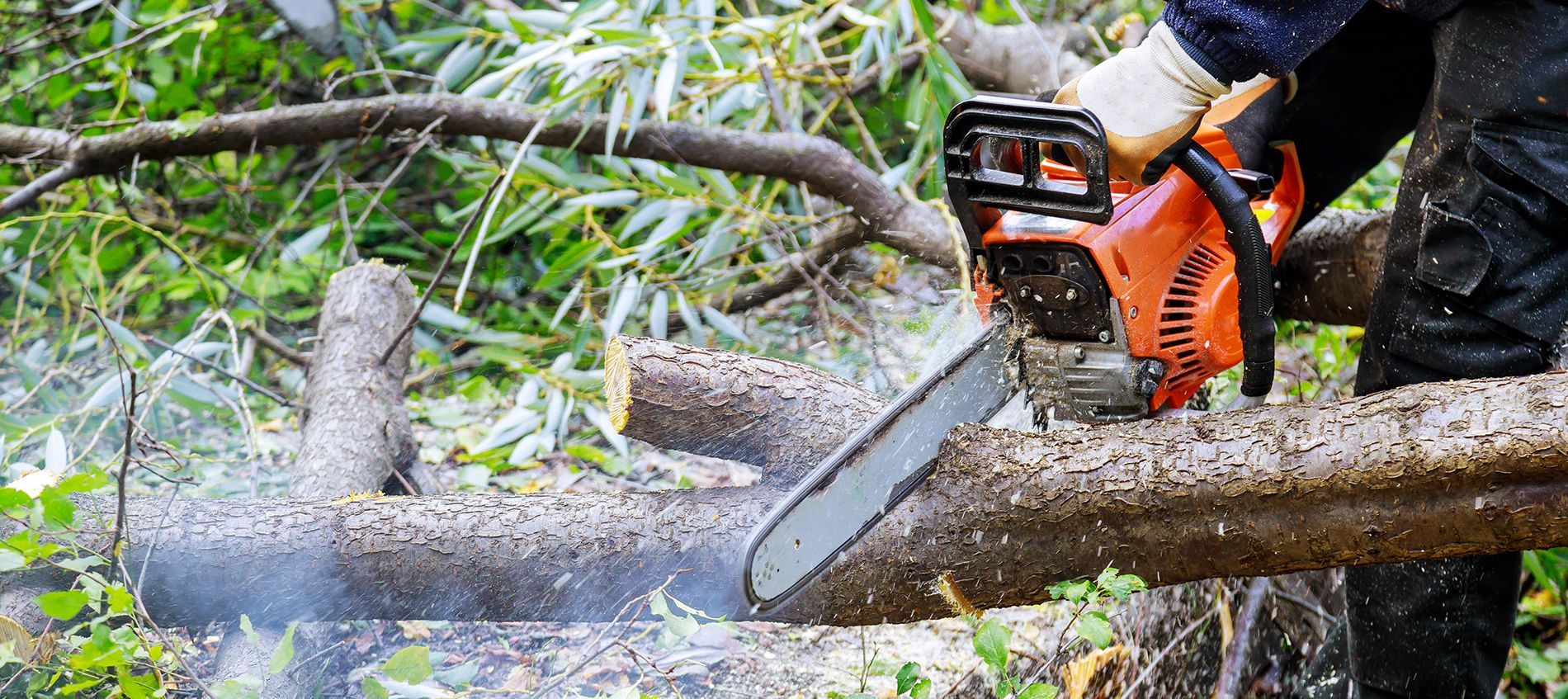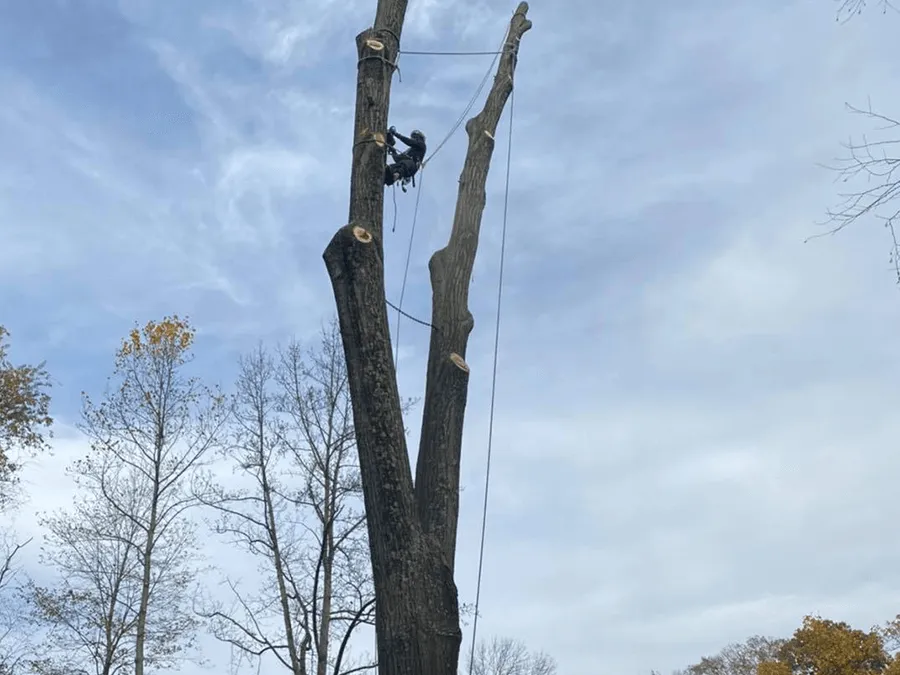Mauricio's Tree Service Blog
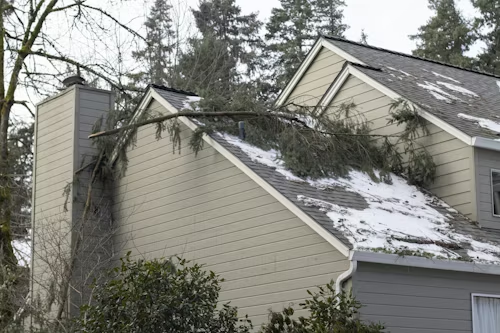
When a tree begins to decline, its structural integrity weakens, making it more susceptible to falling during storms, shedding large limbs, and causing damage to your home. Identifying the early signs of decline is crucial, not only for the health of your landscape, but also for the safety of your family and property. At Mauricio’s Tree Service, we provide hazardous tree removal in the greater Peekskill, NY area. Here are four common warning signs that a tree is dying and should be professionally removed. Significant Canopy Dieback One of the clearest indications of a dying tree is canopy dieback—when large sections of branches stop producing leaves. If you notice bare limbs in the upper portion of the canopy or entire branches that fail to leaf out during the growing season, the tree may be suffering from disease or pests. A thinning canopy means the tree is no longer able to transport nutrients effectively, which can lead to further decline. Deep Cracks, Cavities, or Bark Peeling The trunk serves as the central support structure of any tree. When bark begins peeling away in large sheets, or when deep vertical cracks form, it’s a sign that the tree may no longer be structurally sound. Cavities or hollow sections within the trunk also pose major risks, as they weaken the tree from the inside. Even if the tree still stands tall, these structural issues make it far more likely to fail—especially during high winds or heavy rain. Fungal Growth on the Trunk or Near the Base Fungus growing on the trunk or near the roots often signal internal decay. Fungi thrive on decomposing wood, which means they often appear when a tree’s structural tissues are breaking down. Once decay has set in, the tree becomes increasingly unstable, even if the foliage still appears somewhat healthy. Leaning/Root Problems A tree that suddenly begins to lean, or one with soil lifting around the base, may be suffering from root failure. Roots provide the foundation for the entire tree—when they’re damaged, diseased, or dying, the tree can topple with little warning. Tree Removal in Peekskill, NY For tree removal in Peekskill and the surrounding area, contact Mauricio’s Tree Service at 914-455-1322 . Feel free to give us a call to request an arborist estimate in Peekskill!

When a tree becomes unstable, it can pose a serious safety hazard. Falling trees or large branches can cause significant property damage or injuries, especially during storms or high winds. The key to preventing disaster is recognizing the early signs that a tree may be at risk of collapsing. At Mauricio’s Tree Service, our local arborists provide expert hazardous tree removal in the greater Peekskill area. Here are four warning signs that your tree’s stability may be compromised. Significant Leaning or Sudden Tilt One of the most obvious signs of a potentially dangerous tree is a noticeable lean. While some trees naturally grow at an angle, a sudden or worsening lean indicates instability. This can happen if the tree’s roots are damaged, the soil has eroded, or heavy winds have shifted its balance. If the ground around the base appears cracked or raised, it often means the root system is losing its grip. A leaning tree—especially one that recently began to tilt—should be inspected immediately by a professional arborist. Splitting Trunk A strong, stable tree trunk should be solid and free from major cracks. If you notice deep splits or cracks in the trunk, particularly where large branches meet or near the base, it’s a sign the tree’s structural integrity has been compromised. These splits can worsen over time and cause the tree to break apart unexpectedly. In some cases, these cracks form after a storm or due to internal decay that weakens the wood. A professional can determine whether the damage is repairable or if removal is the safest option. Root Damage or Decay Roots anchor the tree and supply it with essential nutrients and water. When roots are damaged—by construction, soil compaction, or disease—the tree’s stability is severely affected. Fungal growth, soft wood near the base, or exposed roots can all signal decay. Trees with compromised roots are among the most likely to fall, even during mild weather conditions. Dead or Dying Branches If large sections of the tree’s canopy are bare or filled with dead branches, it often points to declining health. Dead branches are more likely to fall and can indicate internal rot. When a significant portion of the crown shows dieback, the tree’s ability to sustain itself diminishes, making it unstable. Regular pruning and assessment by an arborist can help determine whether the tree can be saved or poses too much of a risk. Tree Removal in Peekskill, NY When you need tree removal in Peekskill and the surrounding area, contact Mauricio’s Tree Service at 914-455-1322 . Feel free to give us a call to request a free arborist estimate in Peekskill, NY!
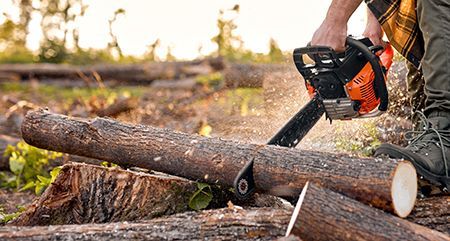
Trees can become very dangerous if they’re unhealthy or structurally compromised. While regular pruning and maintenance can extend a tree’s life, there are times when removal is the safest and most responsible option. Recognizing the early warning signs of a failing tree can prevent property damage and protect the safety of your family and neighbors. At Mauricio’s Tree Service, we provide expert tree removal in the greater Peekskill, NY area. Here are four general signs that it may be time to remove a tree. Severe Structural Damage When a tree’s structure becomes compromised, it can pose a serious hazard. Cracks in the trunk, large cavities, or missing sections of bark often indicate decay. If the trunk is split or leaning heavily, the tree may no longer be able to support its own weight, especially during storms. Structural instability is one of the most critical reasons for removal because it greatly increases the risk of the tree falling unexpectedly. Extensive Dead Branches A few dead branches are common, but when a significant portion of a tree’s canopy is bare or dead, it’s often a sign of serious decline. Dead branches can break off without warning, creating safety hazards for people, vehicles, and structures below. In some cases, dead branches indicate disease or root problems that can’t be reversed. Root Problems or Uprooting Healthy roots are essential for a tree’s stability and nutrient intake. If the roots are exposed, cracked, or lifting out of the soil, the tree may be losing its grip on the ground. Uprooting can occur after heavy rain, construction, or soil erosion. Trees with unstable root systems are at high risk of falling, particularly during strong winds. Because root damage is often difficult to repair, removal is commonly the safest solution. Leaning or Shifting Position A tree that suddenly starts leaning or shifting is a major red flag. While some trees naturally grow at an angle, a new or worsening lean often signals instability or root failure. You might also notice soil cracking or lifting around the base. A leaning tree can quickly become a danger to nearby structures or power lines and should be inspected immediately to determine if removal is warranted. Tree Removal in Peekskill, NY For tree removal in Peekskill, NY and the surrounding area, contact Mauricio’s Tree Service at 914-455-1322 . Feel free to give us a call to arrange an arborist estimate in Peekskill!
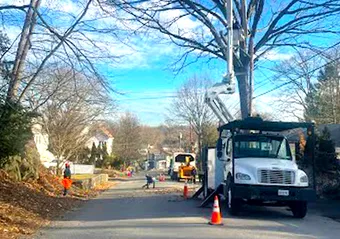
Dead trees might seem harmless at first glance, but they can quickly become a serious problem if left standing. While they may appear stable, dead trees pose risks that go beyond aesthetics. From safety hazards to property damage, failing to remove them can lead to costly and dangerous consequences. Hiring a professional to handle the removal ensures the job is done safely and correctly. At Mauricio’s Tree Service, our local arborists are highly experienced with tree removal in the greater Peekskill area. Here are five important reasons to schedule professional removal of dead trees as soon as possible. Protect Your Property from Damage Dead trees lose structural strength over time, making them prone to falling during strong winds. Large branches or the tree itself can collapse without warning, damaging roofs, fences, vehicles, or other parts of your property. Professional removal minimizes this risk, helping to ensure that your home remains safe. Prevent Safety Hazards A dead tree is a safety risk not only to property but also to people. Falling branches can injure anyone walking nearby, and if the tree is close to a street or sidewalk, it could harm passersby as well. Professionals have the equipment and expertise to safely remove unstable trees before they cause injury. Stop Pest Infestations Dead trees are a magnet for pests such as termites, carpenter ants, and beetles. Once they establish themselves in the tree, it’s only a matter of time before they spread to nearby trees, landscaping, or even your home. Removing a dead tree quickly helps protect your property from costly infestations. Maintain the Health of Your Landscape A dead tree not only detracts from your yard’s appearance but can also negatively affect surrounding vegetation. Rotting wood can harbor diseases and fungi that spread to nearby healthy trees and shrubs. Professional removal prevents the spread of disease and helps preserve the beauty and health of your overall landscape. Ensure Safe and Efficient Removal Removing a dead tree may look straightforward, but it often requires specialized knowledge and equipment. Dead wood is unpredictable, making DIY removal dangerous. Professionals are trained to assess the tree’s condition, use proper techniques, and safely dispose of it. Their expertise reduces the risk of accidents while ensuring the removal is completed efficiently. Tree Removal in Peekskill, NY When you need tree removal in Peekskill and the surrounding area, contact Mauricio’s Tree Service at 914-455-1322 . Feel free to give us a call to request a free arborist estimate in Peekskill, NY!
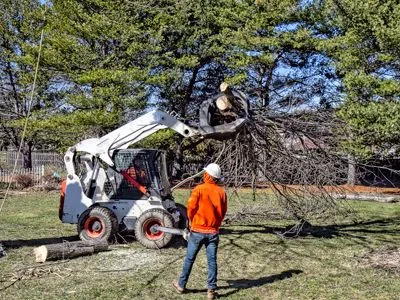
If you’re planning to build a home, install landscaping, or expand your property’s usable space, residential lot clearing is often the first step. While it may seem like a job you can tackle yourself with a chainsaw and a rented skid steer, lot clearing requires careful planning, expertise, and the right equipment. Hiring a professional specialist helps ensure the job is done safely, efficiently, and in compliance with local regulations. At Mauricio’s Tree Service, we provide expert residential lot clearing in the greater Peekskill, NY area. Here are four important reasons to leave this task to the experts. Safe Removal of Trees and Debris Removing large trees, stumps, and thick brush involves heavy machinery and potentially dangerous tasks like cutting limbs and grinding roots. Professionals are trained to handle hazardous conditions and know how to safely remove obstructions without risking injury or causing damage to nearby infrastructure. Their experience helps minimize the chance of accidents during the clearing process. Proper Equipment for the Job Residential lot clearing requires more than just a chainsaw and some muscle. From skid steers to stump grinders, professionals have expertise with specialized tools that make the job faster and more precise. They also know which equipment to use for different terrains and vegetation types, enabling a smoother clearing process. Efficient and Thorough Results A professional lot clearing specialist can complete the job much faster and more thoroughly than the average homeowner. They’ll make sure all stumps, roots, and debris are removed, leaving the land truly ready for construction, landscaping, or drainage improvements. DIY clearing often leaves behind hidden obstacles that can create future headaches. Compliance with Local Regulations Lot clearing isn’t just about removing trees—it’s also about meeting local environmental requirements. Professionals understand the regulatory process and know how to comply with rules regarding protected trees, erosion control, and stormwater management. Hiring a specialist helps you avoid regulatory issues. Lot Clearing in Peekskill, NY For expert lot clearing in Peekskill and the surrounding area, contact Mauricio’s Tree Service at 914-455-1322 . Feel free to give us a call to ask for a free arborist estimate in Peekskill, NY!
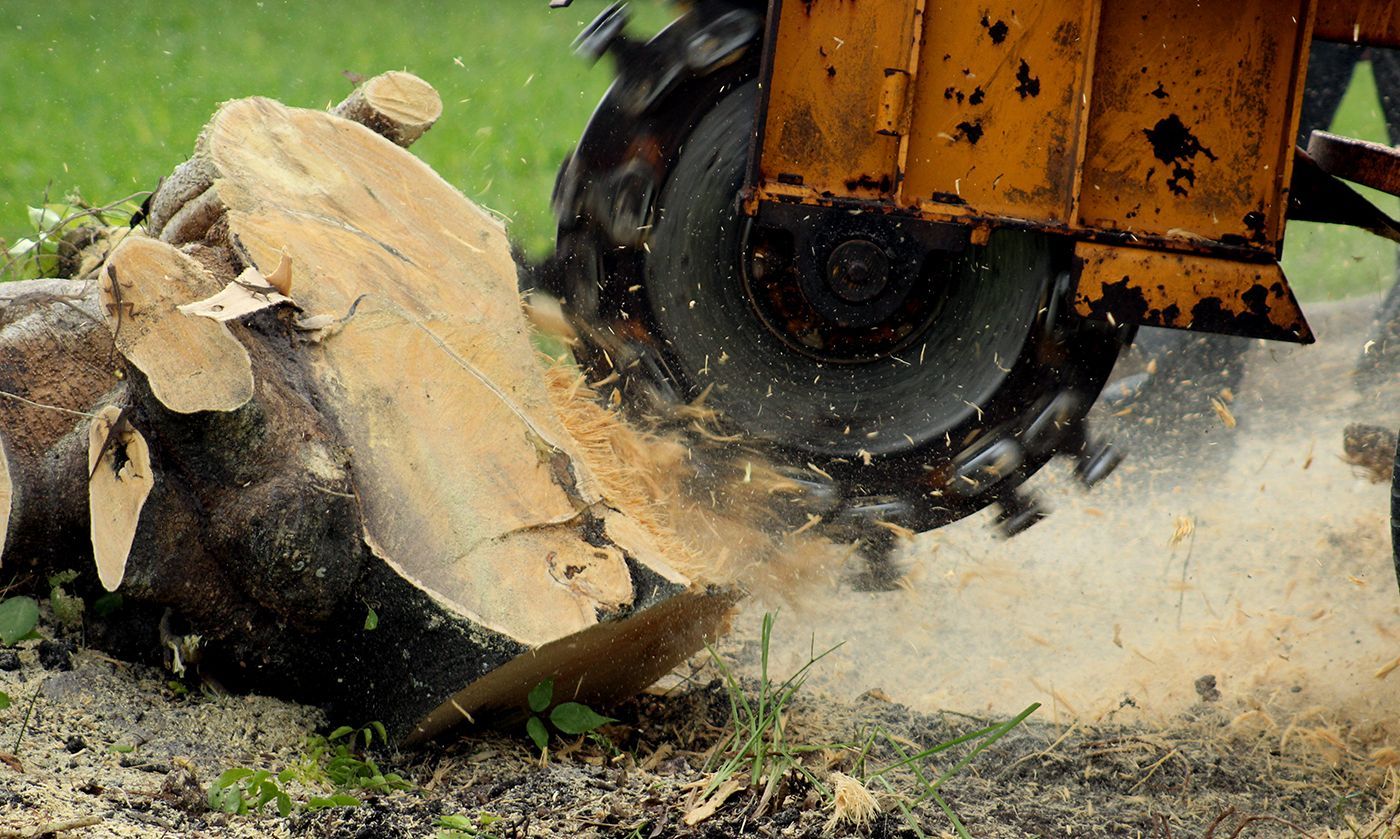
After a tree has been cut down, the remaining stump may seem like a minor issue. However, leaving it in place can actually reduce your property’s appeal and even lower its market value. Whether you're looking to sell your home soon or just want to maintain its condition, removing old tree stumps is a smart investment. At Mauricio’s Tree Service, we provide expert stump grinding and removal in the greater Peekskill, NY area. Here are five ways that removing tree stumps can enhance your property’s value. Improves Curb Appeal First impressions matter, especially when it comes to real estate. A yard dotted with old stumps can make your property look neglected. By removing stumps, you give your landscape a cleaner, more polished appearance that appeals to buyers and neighbors alike. An attractive, well-maintained yard can significantly boost your home's curb appeal and set a positive tone for the rest of the property. Eliminates Safety Hazards Tree stumps pose a tripping risk for children and guests. They're especially dangerous when hidden by grass or leaves. In addition to physical hazards, stumps can also damage lawn equipment if struck while mowing. By removing stumps, you reduce the risk of accidents and liability, which makes your property safer and more desirable. Prevents Pest Infestations Tree stumps often attract pests such as termites, carpenter ants, and other wood-boring insects. These pests can spread from the stump to nearby trees, shrubs, or even your home’s wooden structures. Removing stumps cuts off a major breeding ground and helps protect your property from potential infestations that can be costly to eliminate. Creates Space for New Landscaping A stump in the middle of your yard limits your landscaping options. Once it's gone, you can replant grass, install a garden bed, or even plant a new tree. The removal of stumps opens up space that can be used creatively to enhance your yard’s beauty and functionality. Well-designed landscaping can significantly raise the market value of a home by increasing its overall usability and visual appeal. Avoids Future Growth Problems Tree stumps can sometimes lead to unwanted regrowth. Shoots may start to sprout from the stump or roots, leading to a recurring problem that becomes harder to control over time. This regrowth can create ongoing maintenance issues. Removing the stump fully eliminates the chance of regrowth and contributes to an easier-to-maintain yard. Stump Grinding & Removal in Peekskill, NY For stump grinding and removal in Peekskill, NY and the surrounding area, contact Mauricio’s Tree Service at 914-455-1322 . Feel free to give us a call to arrange a free arborist estimate in Peekskill, NY!

